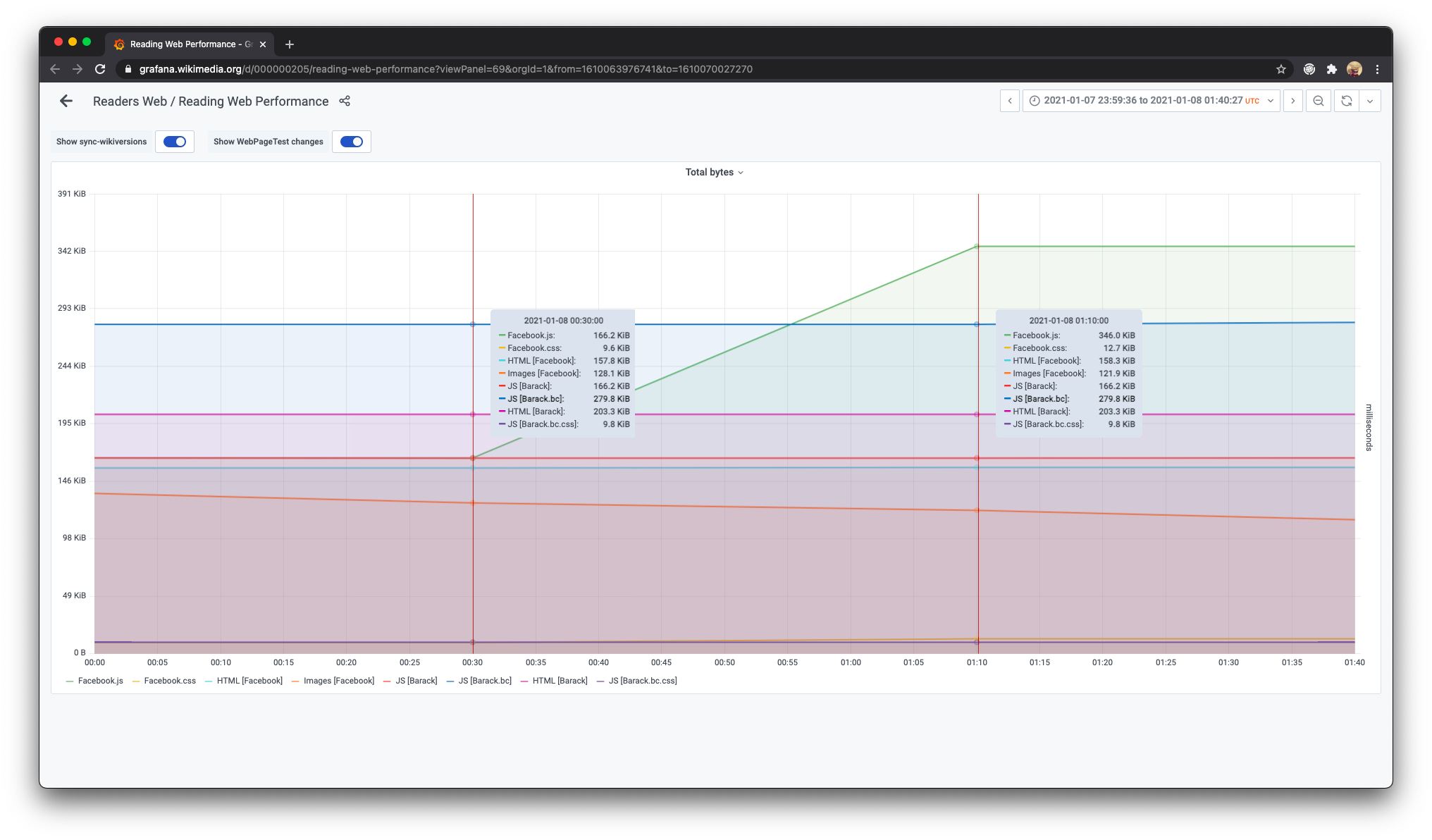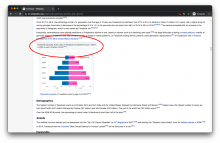When graphoid was undeployed, we witnessed a large spike in JS assets (179.8 KiB of JS) for the Facebook page because of the single graph that was included in the page as documented by @phuedx in T271495#6748186
Per Sam, that 179.8 KiB of JS is introduced by the Graph extension when $wgGraphImgServiceUrl is falsy and there's at least one graph on the page in the form of the ext.graph.vega2 RL module and the wgGraphSpecs JS config variable.
This is an unfortunate download for users that do not interact with the graph, especially considering this is more bytes than all of the images on the page combined.
Expected: The graph code should be loaded when I click on the graph or later in the page's execution (looks in the direction of the performance team for the recommendation).

